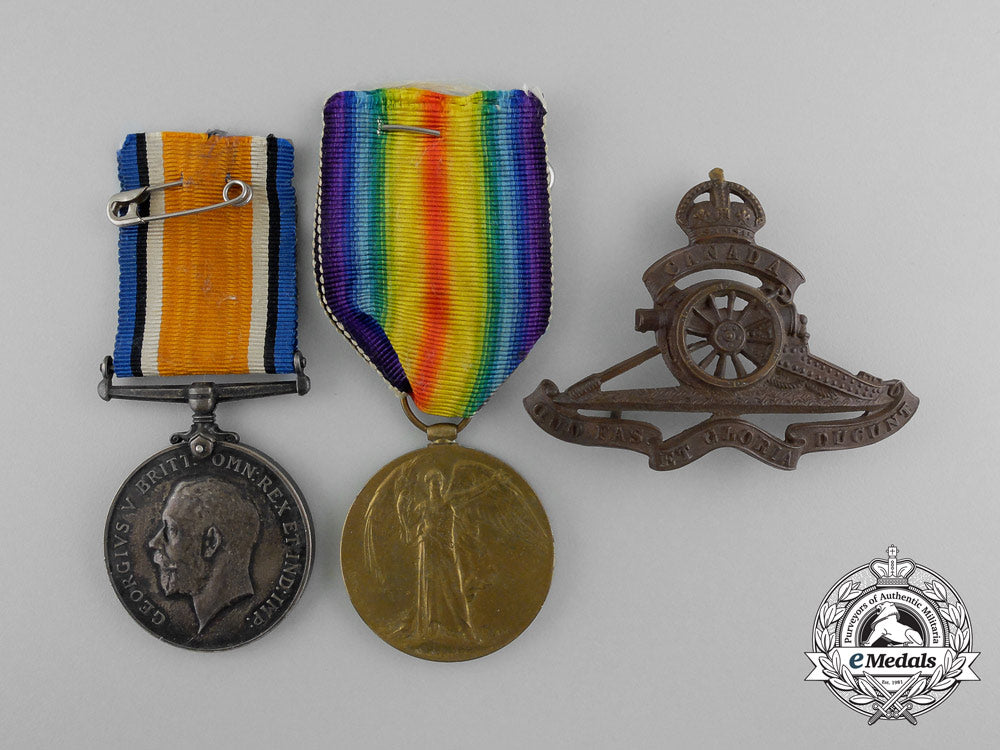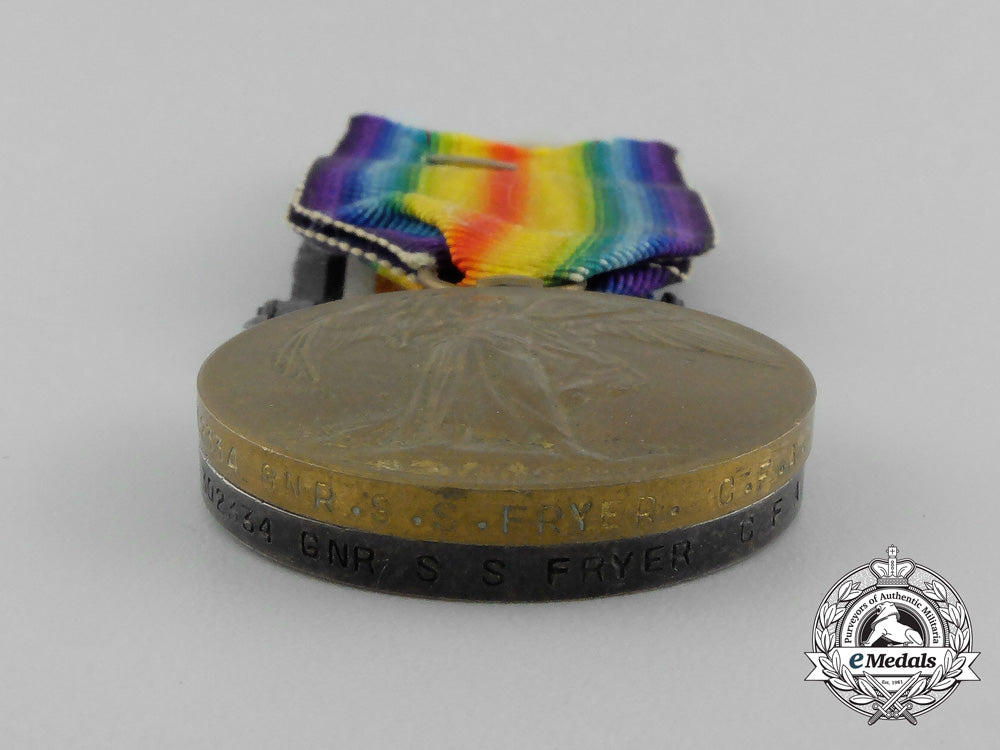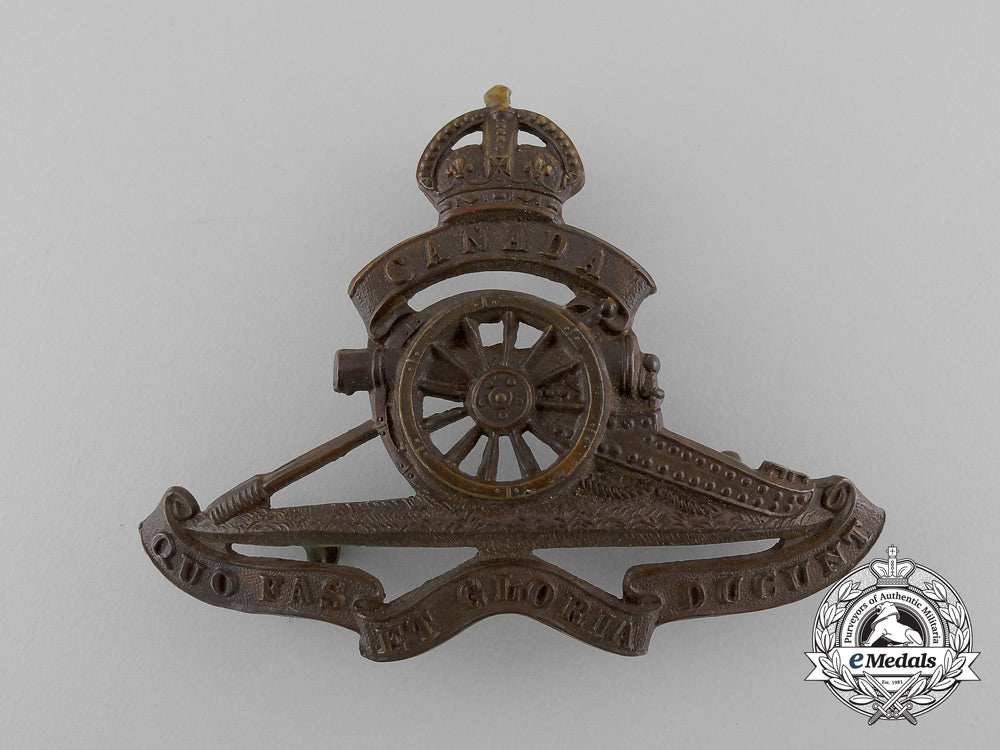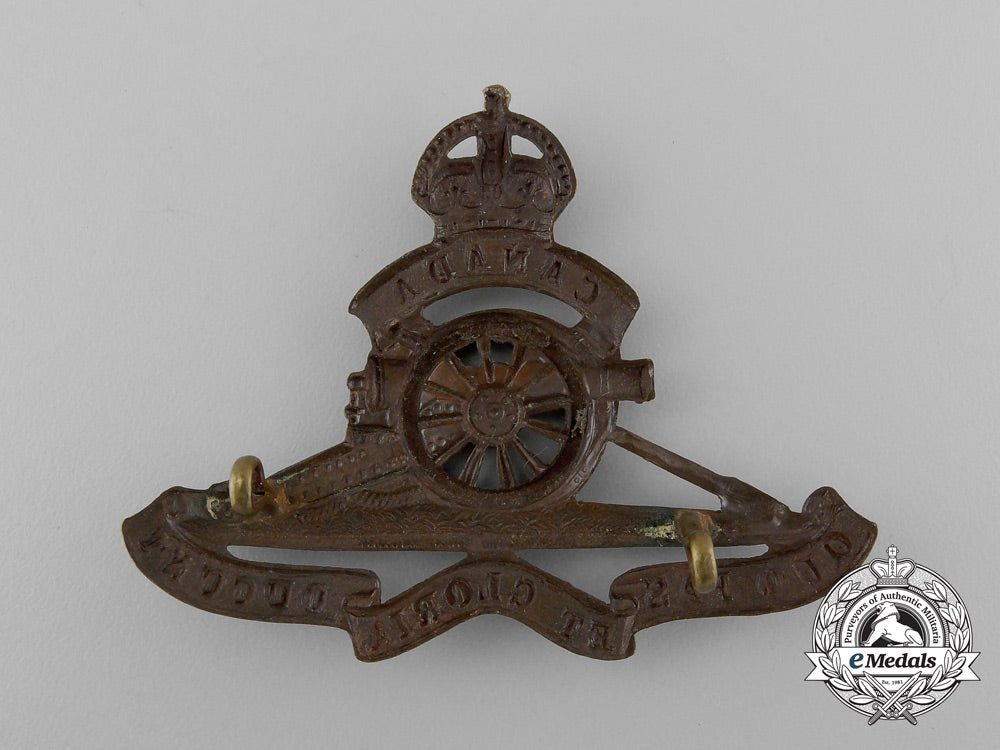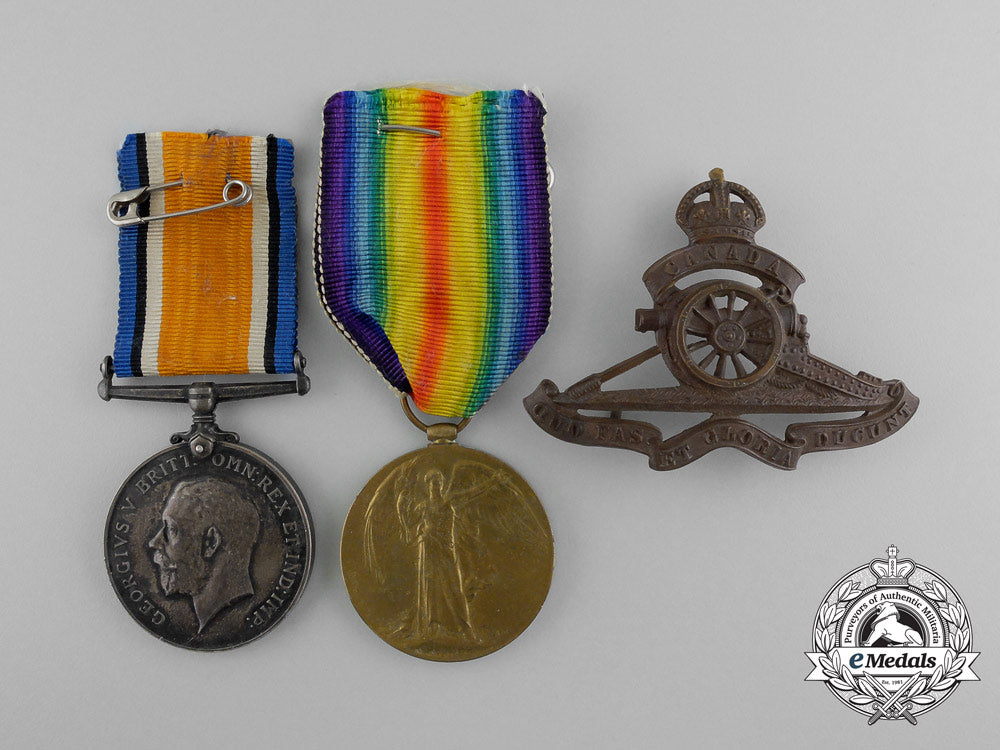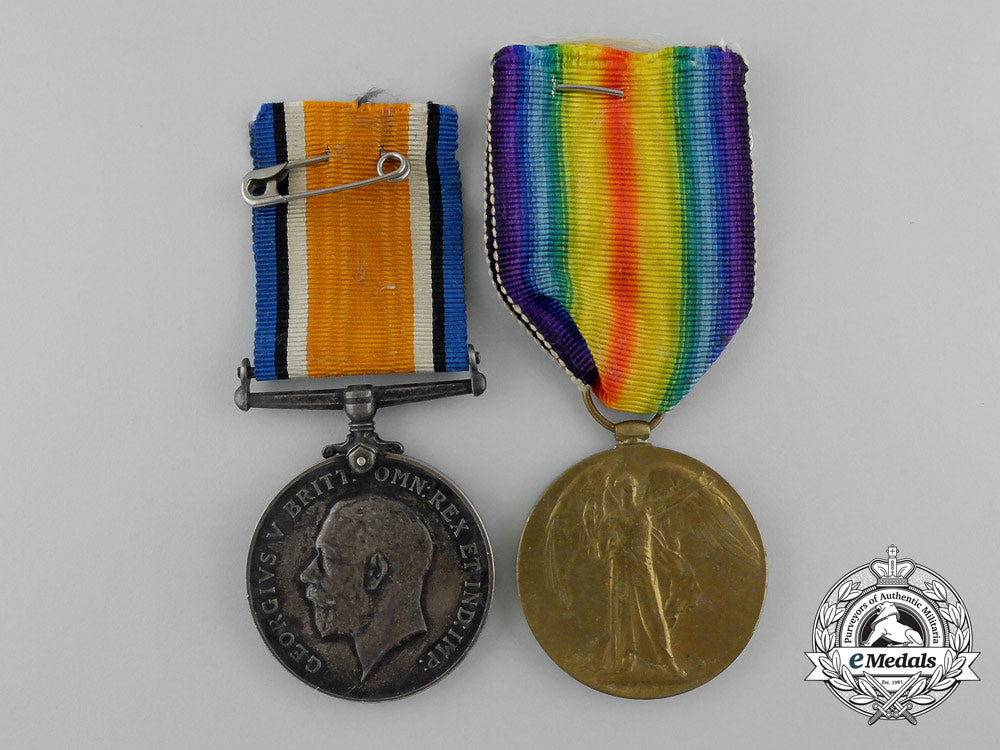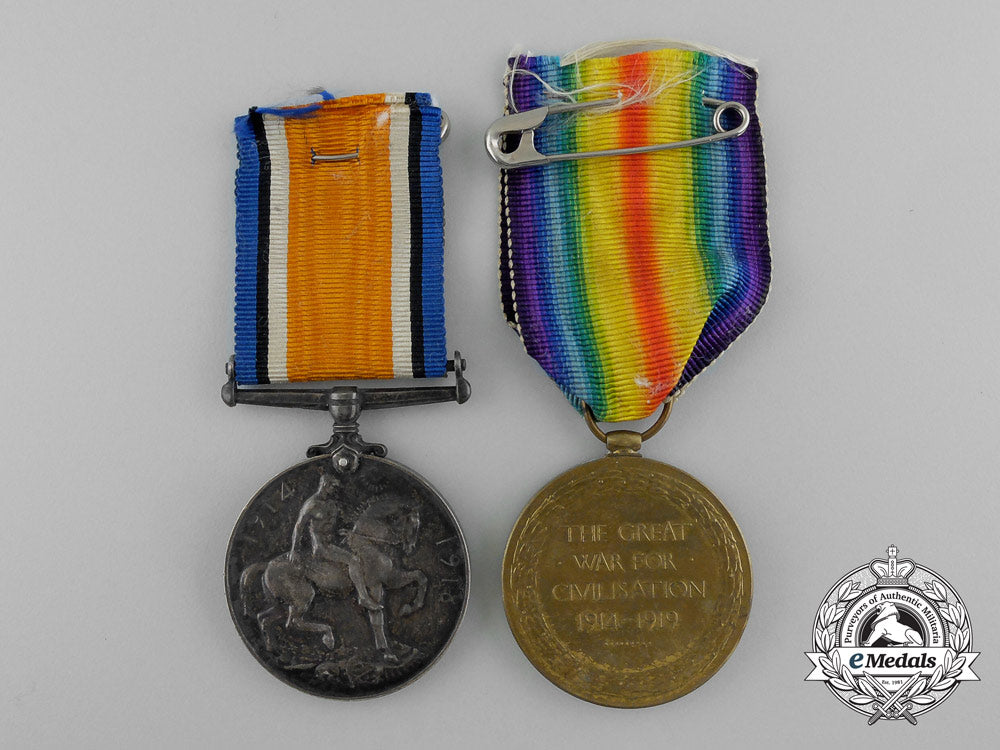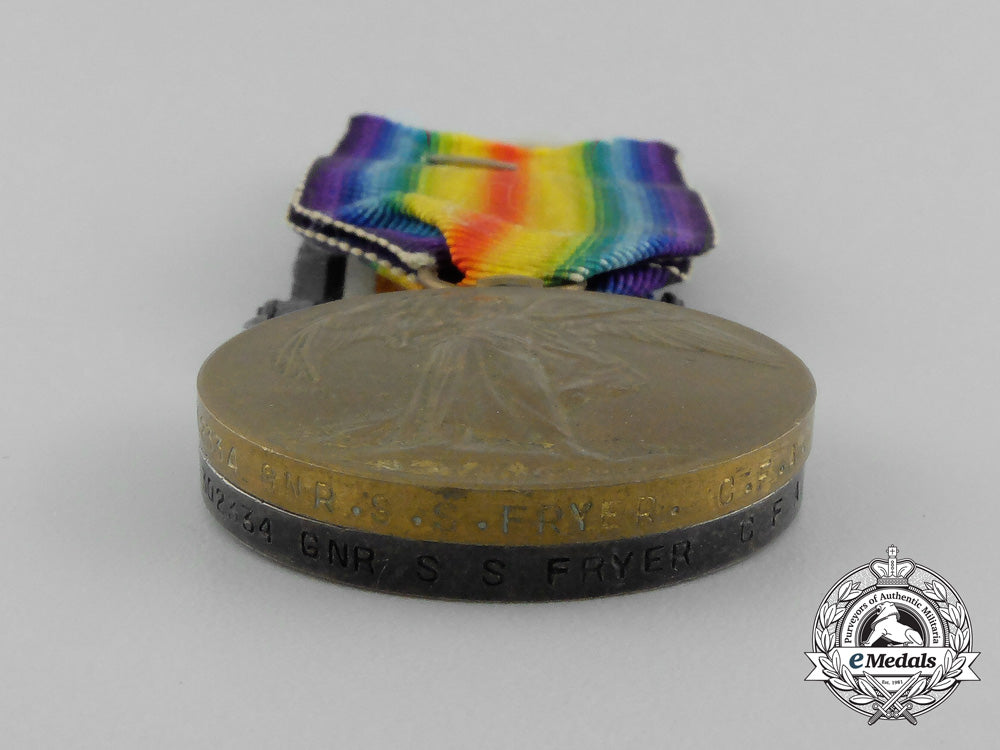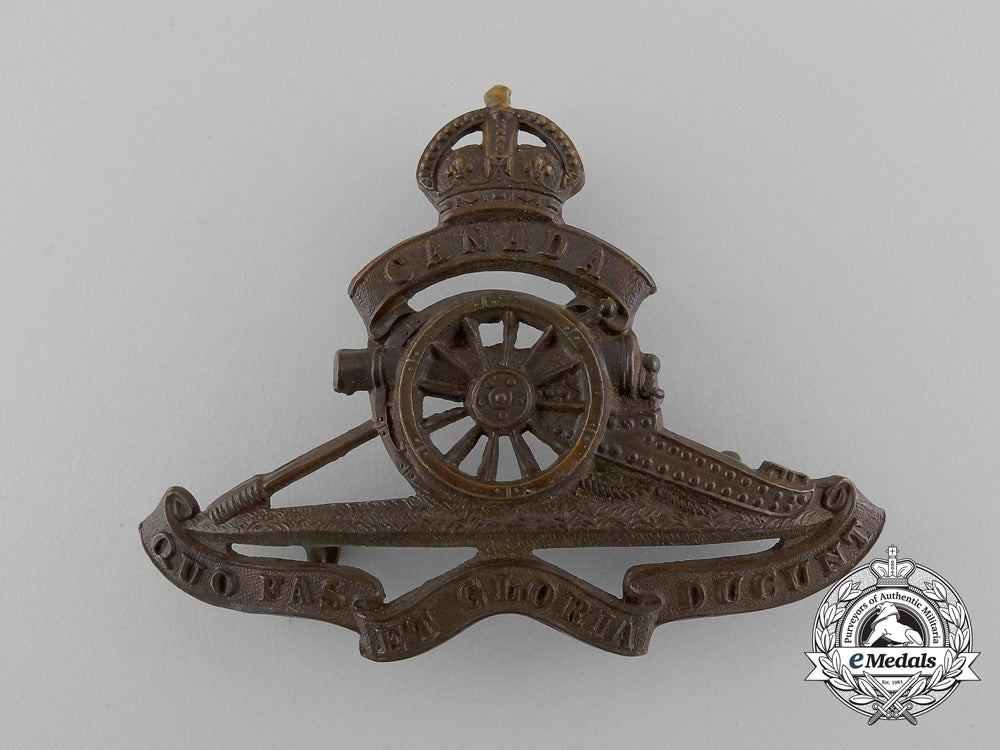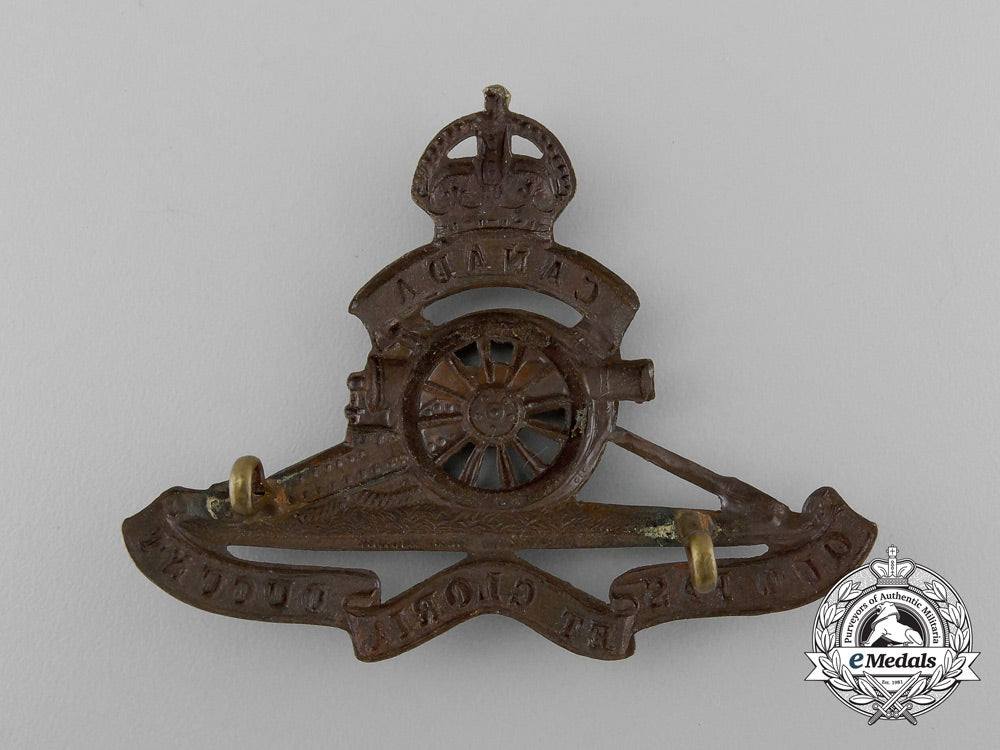
LOADING ...
In response to evolving domestic opinion, eMedals Inc has made the conscious decision to remove the presentation of German Third Reich historical artifacts from our online catalogue. For three decades, eMedals Inc has made an effort to preserve history in all its forms. As historians and researchers, we have managed sensitive articles and materials with the greatest of care and respect for their past and present social context. We acknowledge the growing sentiments put forth by the Canadian public and have taken proactive actions to address this opinion.
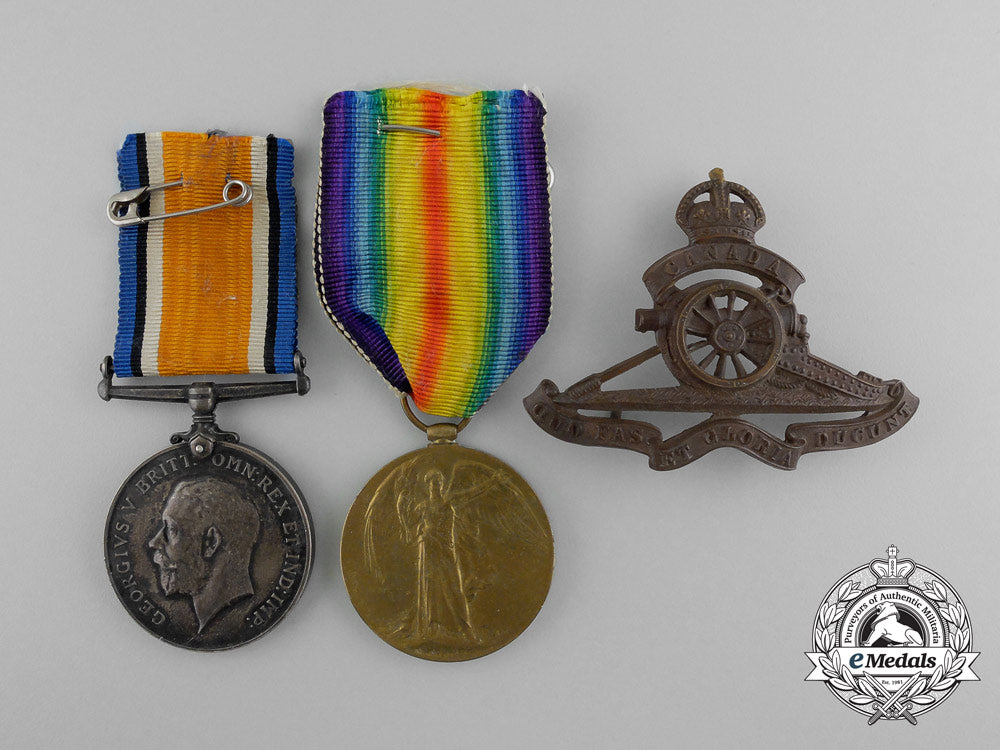
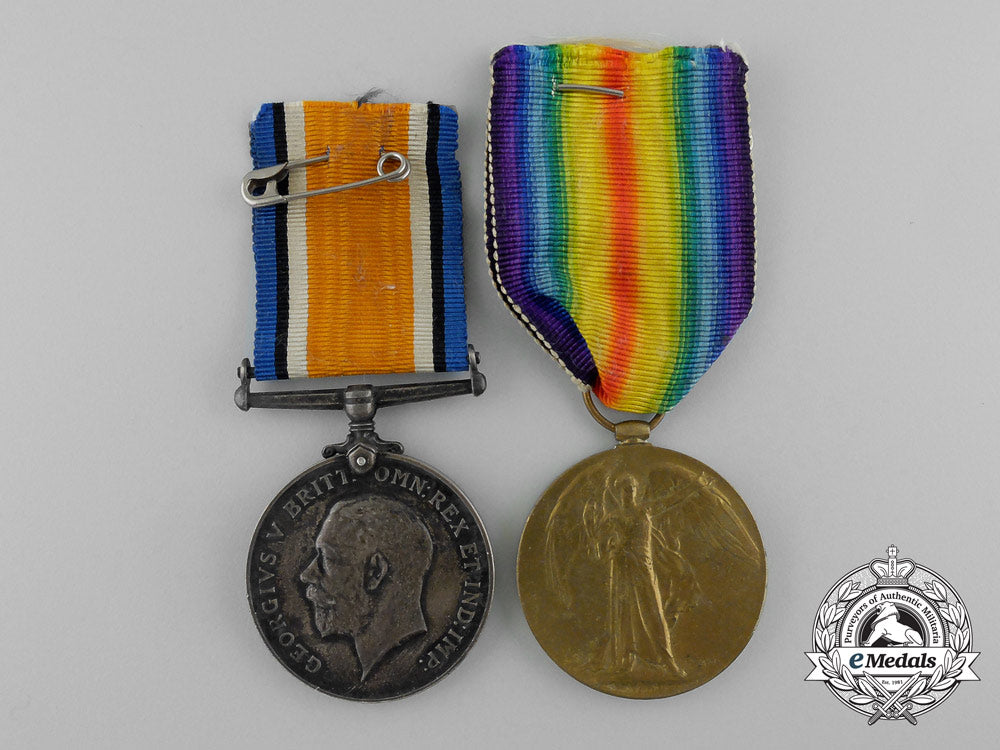
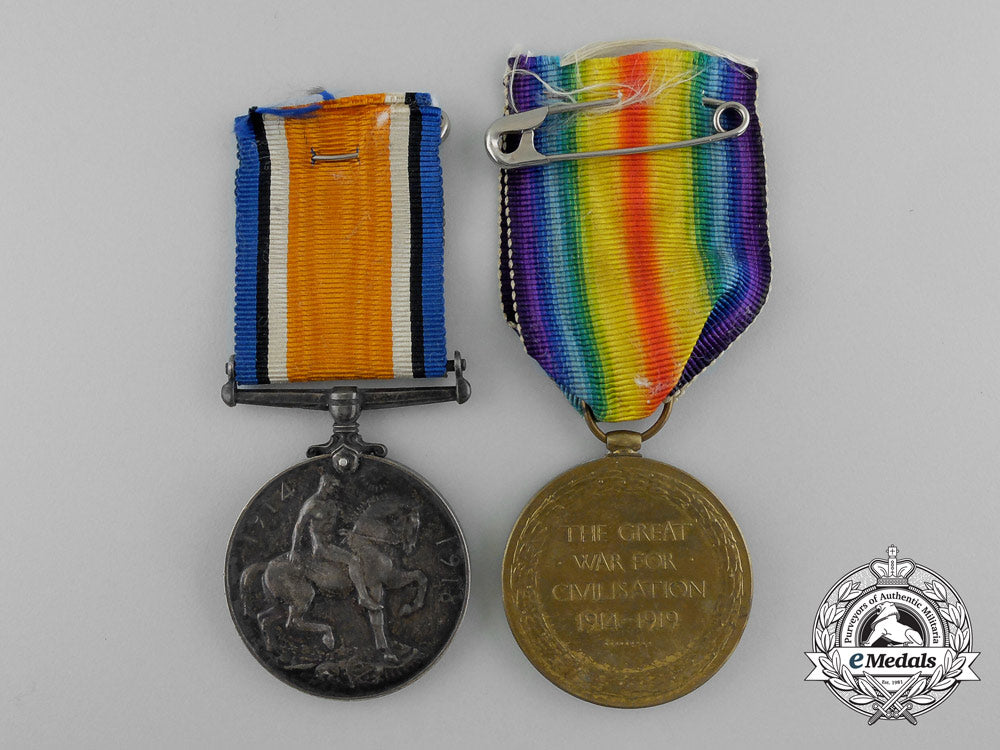
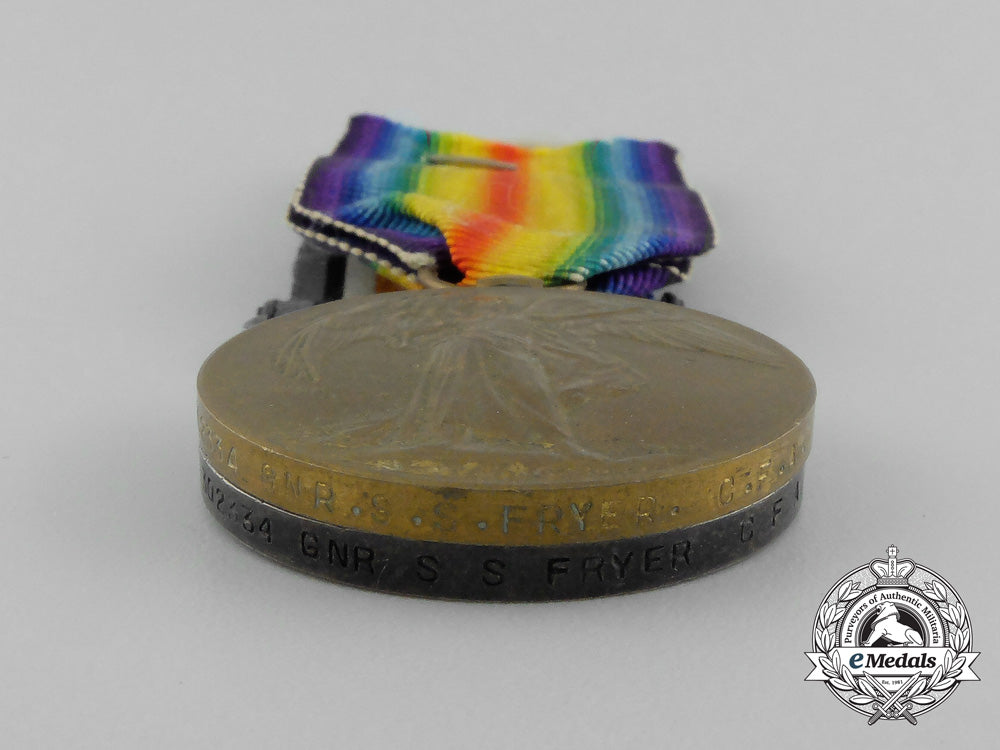
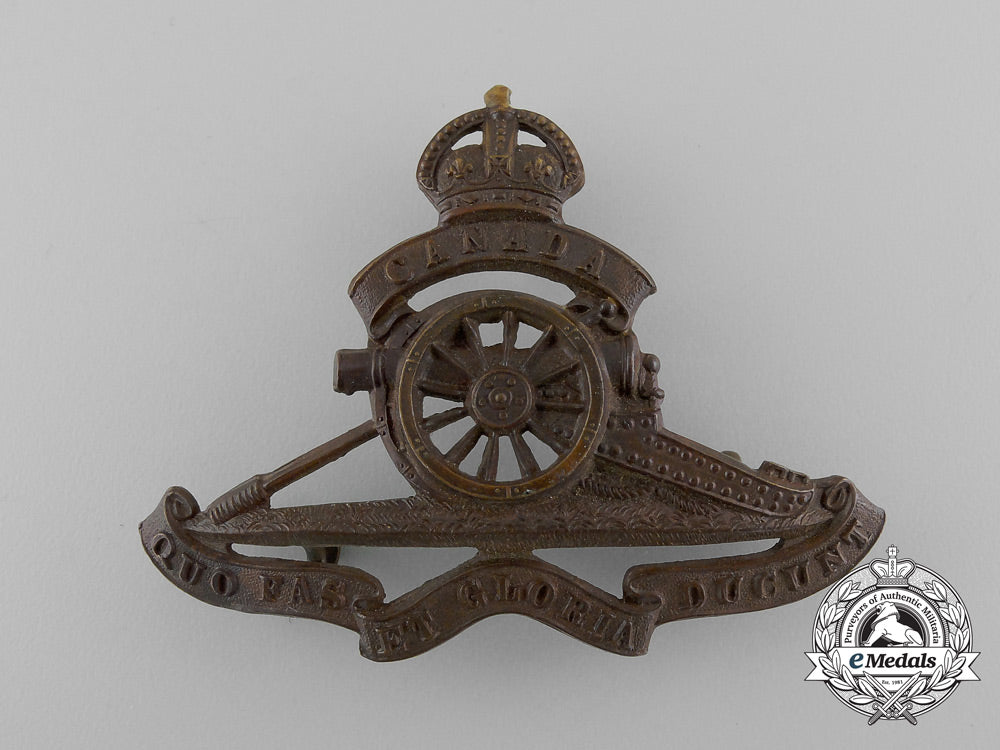
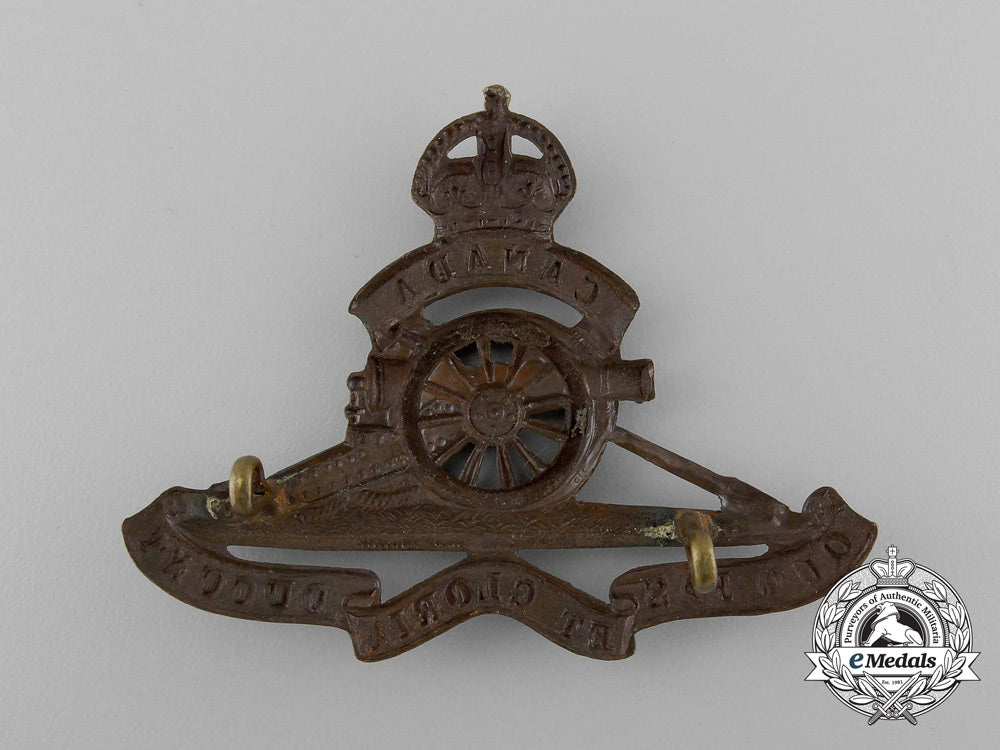
A First War Pair To The Canadian Field Artillery; Wounded 1918
A First War Pair To The Canadian Field Artillery; Wounded 1918
SKU: ITEM: C4523
0% Buyer's Premium
Current Bid:
Your Max Bid:
Bid History:
Time Remaining:
Couldn't load pickup availability
Shipping Details
Shipping Details
eMedals offers rapid domestic and international shipping. Orders received prior to 12:00pm (EST) will be shipped on the same business day.* Orders placed on Canadian Federal holidays will be dispatched the subsequent business day. Courier tracking numbers are provided for all shipments. All items purchased from eMedals can be returned for a full monetary refund or merchandise credit, providing the criteria presented in our Terms & Conditions are met. *Please note that the addition of a COA may impact dispatch time.
Shipping Details
eMedals offers rapid domestic and international shipping. Orders received prior to 12:00pm (EST) will be shipped on the same business day.* Orders placed on Canadian Federal holidays will be dispatched the subsequent business day. Courier tracking numbers are provided for all shipments. All items purchased from eMedals can be returned for a full monetary refund or merchandise credit, providing the criteria presented in our Terms & Conditions are met. *Please note that the addition of a COA may impact dispatch time.
Description
Description
British War Medal (302334 GNR. S.S. FRYER. C.F.A.); and Victory Medal (302334 GNR. S.S. FRYER. C.F.A.). Un-mounted, original ribbons with safety pin attachments, dark patina on the BWM, better than extremely fine. Accompanied by a Canadian Field Artillery Cap Badge (bronze, maker marked "CARON BROS MONTREAL 1915" on the reverse, 51 mm x 64 mm, intact lugs), the badge also better than extremely fine.
Footnote: Stuart Stanley Fryer was born on July 23, 1884 in Snodland, Kent, England. He enlisted with the 4th Battery, Canadian Field Artillery on August 17, 1915. Three months later, he signed his Attestation Paper as a Gunner (302334) with the 42nd Overseas Battery, Canadian Field Artillery, on November 11, 1915 in Hamilton, Ontario, at the age of 31, naming his next-of-kin as his widowed mother, Mrs. Elizabeth Fryer of Hamilton, stating that he was with an Active Militia, that he was not married and that he had been employed by a wholesale clothier, Sanford & Company as a Shipper. He was initially transferred to the 40th Battery on November 15, 1915, followed by a transfer to the 42nd Battery on December 17th. Before he left for overseas service, he married Mary Maitland Fryer on January 1, 1916. Fryer was with the 8th Brigade, Divisional Ammunition Column, Canadian Field Artillery, when he embarked Saint John, New Brunswick aboard the S.S. Metagawa on February 6, 1916, arriving in Plymouth, England on the 14th. A little over three months after arriving in England, he was transferred to the 3rd Canadian Divisional Ammunition Column on May 25, 1916. Seven weeks later, Gunner Fryer embarked for service in the French theatre on July 14, 1916, disembarking in Le Havre, France on the 15th. The following March of 1917 saw Fryer suffering from "hydrocele of the left tunica vaginalis" (a hydrocele is a fluid-filled sac surrounding a testicle that causes swelling in the scrotum; tunica vaginalis is the pouch of the serous membrane that covers the testes). One of the doctors stated in his report that Fryer, "after a good deal of riding in a saddle, (had) noticed his left testicle was swollen half size (that) it is at present and (that he received a) suspensory from the M.O. (Medical Officer). It has gradually got larger", but eventually with treatment, the swelling went away. A little over eleven months after arriving in France, Gunner Fryer was transferred to the 4th Canadian Divisional Ammunition Column in the field on June 25, 1917. In October 1917, Fryer was "struck by a piece of brick in the side of his nose. He did not leave the lines. No disability", resulting in a scar on the left side of the bridge of his nose. He was awarded one Good Conduct Badge on November 11, 1917. Fryer went injury-free until June 18, 1918, when he suffered a gun shot wound (shrapnel fragments) to the third finger on his right hand (ring finger) and was admitted to No. 14 Canadian Field Ambulance, then transferred to No. 6 Casualty Clearing Station the following day. He was subsequently invalided to England, where he was transferred to the Canadian Artillery Regimental Depot at Bordon, then admitted to Norfolk War Hospital at Thorpe, Norwich on June 24, 1918, where he had his finger amputated. Twenty-five days later, on July 19, 1918, he was transferred to Melton Lodge in Yarmouth, followed by a transfer to the Canadian Convalescent Hospital at Woodcote Park, Epsom on August 27th. After four weeks, Fryer was discharged from Woodcote Park on September 20th and placed on command to the 2nd Canadian Convalescent Depot. One doctor noted that Fryer's "distal phalanx has been amputated. Some trouble at (the) base and frequently has slight discharge" and that he had "limited flexion (bending movement around the joint) of ring finger. Normal disability", the finger gone from the second joint. He was posted to the Canadian Artillery Regimental Depot on October 8th, however, the finger was not healing properly, with Fryer developing a "Whitlow" (an abscess in the soft tissue), forcing his admission to hospital once again, this time to No. 12 Canadian General Hospital at Bramshott on November 12, 1918, and it was here that a second amputation was done on the 14th. Although initially identified as a "Whitlow", it turned out to be a piece of dead bone and after the second operation, the finger healed promptly in two weeks. He was discharged from No. 12 Canadian General Hospital on November 29th, then admitted the same day to the Canadian Convalescent Hospital, Bear Wood, Wokingham, Berkshire, where he would recuperate for the next week, before being discharged on December 6th and returning to the Canadian Artillery Regimental Depot at Bordon. In a medical examination conducted on December 21, 1918 at Bordon, Captain D. Nathan, Canadian Army Medical Corps, noted that Fryer was a "well nourished man" and that the "grip of (his) right hand (was) considerably weakened". He was placed on command at the Canadian Corps Camp Rhyl from December 27, 1918 to January 9, 1919, before being struck off strength for return to Canada, embarking England aboard the S.S. Olympic and arriving in Halifax on January 16, 1919. He was taken on strength shortly thereafter at the Casualty Company at Exhibition Camp, No. 2 District Depot in Toronto, Ontario. In his Medical History of an Invalid, dated February 7, 1919 at Exhibition Camp, the doctor noted that Fryer's "finger (on) the right hand (was) gone from the second joint" and that he was in "constant pain (like pins and needles) on the ulnar side of the stump, made worse by gripping anything or knocking the end of the stump against anything. The stump gets cold and numb very quickly and his hand feels weak". Gunner Stuart Stanley Fryer was discharged as "Having been found Medically Unfit for service" at No. 2 District Depot in Toronto, on February 15, 1919, credited with having served in England and France. For his First World War service, he was awarded the British War Medal and the Victory Medal. He died on May 3, 1963 in Hamilton, at the age of 78.
Description
British War Medal (302334 GNR. S.S. FRYER. C.F.A.); and Victory Medal (302334 GNR. S.S. FRYER. C.F.A.). Un-mounted, original ribbons with safety pin attachments, dark patina on the BWM, better than extremely fine. Accompanied by a Canadian Field Artillery Cap Badge (bronze, maker marked "CARON BROS MONTREAL 1915" on the reverse, 51 mm x 64 mm, intact lugs), the badge also better than extremely fine.
Footnote: Stuart Stanley Fryer was born on July 23, 1884 in Snodland, Kent, England. He enlisted with the 4th Battery, Canadian Field Artillery on August 17, 1915. Three months later, he signed his Attestation Paper as a Gunner (302334) with the 42nd Overseas Battery, Canadian Field Artillery, on November 11, 1915 in Hamilton, Ontario, at the age of 31, naming his next-of-kin as his widowed mother, Mrs. Elizabeth Fryer of Hamilton, stating that he was with an Active Militia, that he was not married and that he had been employed by a wholesale clothier, Sanford & Company as a Shipper. He was initially transferred to the 40th Battery on November 15, 1915, followed by a transfer to the 42nd Battery on December 17th. Before he left for overseas service, he married Mary Maitland Fryer on January 1, 1916. Fryer was with the 8th Brigade, Divisional Ammunition Column, Canadian Field Artillery, when he embarked Saint John, New Brunswick aboard the S.S. Metagawa on February 6, 1916, arriving in Plymouth, England on the 14th. A little over three months after arriving in England, he was transferred to the 3rd Canadian Divisional Ammunition Column on May 25, 1916. Seven weeks later, Gunner Fryer embarked for service in the French theatre on July 14, 1916, disembarking in Le Havre, France on the 15th. The following March of 1917 saw Fryer suffering from "hydrocele of the left tunica vaginalis" (a hydrocele is a fluid-filled sac surrounding a testicle that causes swelling in the scrotum; tunica vaginalis is the pouch of the serous membrane that covers the testes). One of the doctors stated in his report that Fryer, "after a good deal of riding in a saddle, (had) noticed his left testicle was swollen half size (that) it is at present and (that he received a) suspensory from the M.O. (Medical Officer). It has gradually got larger", but eventually with treatment, the swelling went away. A little over eleven months after arriving in France, Gunner Fryer was transferred to the 4th Canadian Divisional Ammunition Column in the field on June 25, 1917. In October 1917, Fryer was "struck by a piece of brick in the side of his nose. He did not leave the lines. No disability", resulting in a scar on the left side of the bridge of his nose. He was awarded one Good Conduct Badge on November 11, 1917. Fryer went injury-free until June 18, 1918, when he suffered a gun shot wound (shrapnel fragments) to the third finger on his right hand (ring finger) and was admitted to No. 14 Canadian Field Ambulance, then transferred to No. 6 Casualty Clearing Station the following day. He was subsequently invalided to England, where he was transferred to the Canadian Artillery Regimental Depot at Bordon, then admitted to Norfolk War Hospital at Thorpe, Norwich on June 24, 1918, where he had his finger amputated. Twenty-five days later, on July 19, 1918, he was transferred to Melton Lodge in Yarmouth, followed by a transfer to the Canadian Convalescent Hospital at Woodcote Park, Epsom on August 27th. After four weeks, Fryer was discharged from Woodcote Park on September 20th and placed on command to the 2nd Canadian Convalescent Depot. One doctor noted that Fryer's "distal phalanx has been amputated. Some trouble at (the) base and frequently has slight discharge" and that he had "limited flexion (bending movement around the joint) of ring finger. Normal disability", the finger gone from the second joint. He was posted to the Canadian Artillery Regimental Depot on October 8th, however, the finger was not healing properly, with Fryer developing a "Whitlow" (an abscess in the soft tissue), forcing his admission to hospital once again, this time to No. 12 Canadian General Hospital at Bramshott on November 12, 1918, and it was here that a second amputation was done on the 14th. Although initially identified as a "Whitlow", it turned out to be a piece of dead bone and after the second operation, the finger healed promptly in two weeks. He was discharged from No. 12 Canadian General Hospital on November 29th, then admitted the same day to the Canadian Convalescent Hospital, Bear Wood, Wokingham, Berkshire, where he would recuperate for the next week, before being discharged on December 6th and returning to the Canadian Artillery Regimental Depot at Bordon. In a medical examination conducted on December 21, 1918 at Bordon, Captain D. Nathan, Canadian Army Medical Corps, noted that Fryer was a "well nourished man" and that the "grip of (his) right hand (was) considerably weakened". He was placed on command at the Canadian Corps Camp Rhyl from December 27, 1918 to January 9, 1919, before being struck off strength for return to Canada, embarking England aboard the S.S. Olympic and arriving in Halifax on January 16, 1919. He was taken on strength shortly thereafter at the Casualty Company at Exhibition Camp, No. 2 District Depot in Toronto, Ontario. In his Medical History of an Invalid, dated February 7, 1919 at Exhibition Camp, the doctor noted that Fryer's "finger (on) the right hand (was) gone from the second joint" and that he was in "constant pain (like pins and needles) on the ulnar side of the stump, made worse by gripping anything or knocking the end of the stump against anything. The stump gets cold and numb very quickly and his hand feels weak". Gunner Stuart Stanley Fryer was discharged as "Having been found Medically Unfit for service" at No. 2 District Depot in Toronto, on February 15, 1919, credited with having served in England and France. For his First World War service, he was awarded the British War Medal and the Victory Medal. He died on May 3, 1963 in Hamilton, at the age of 78.
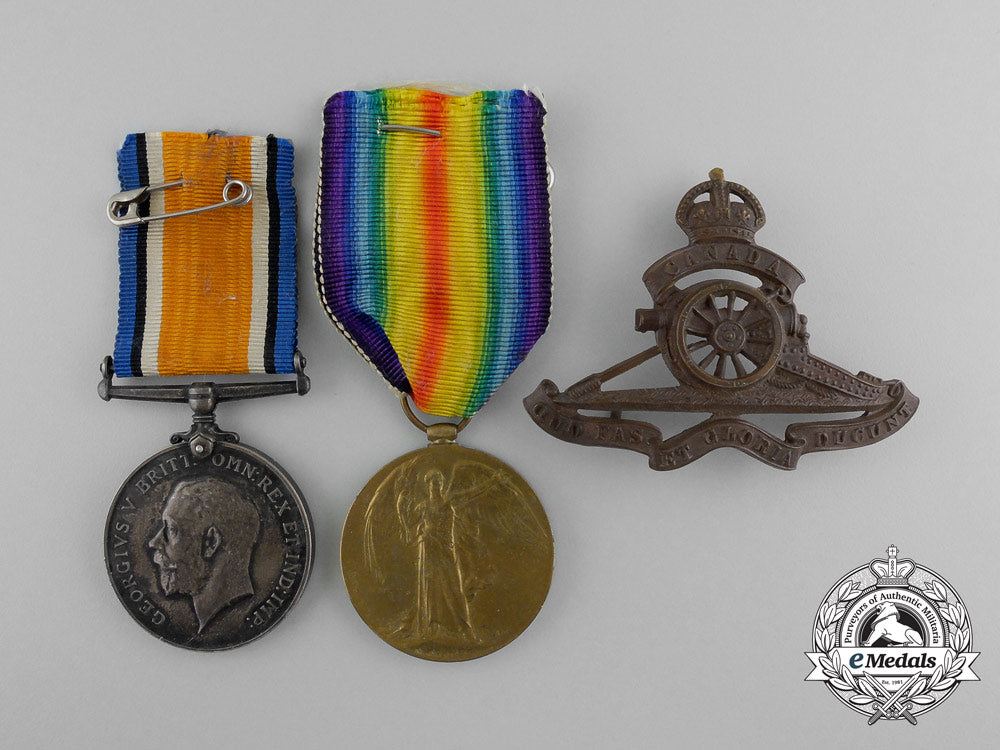
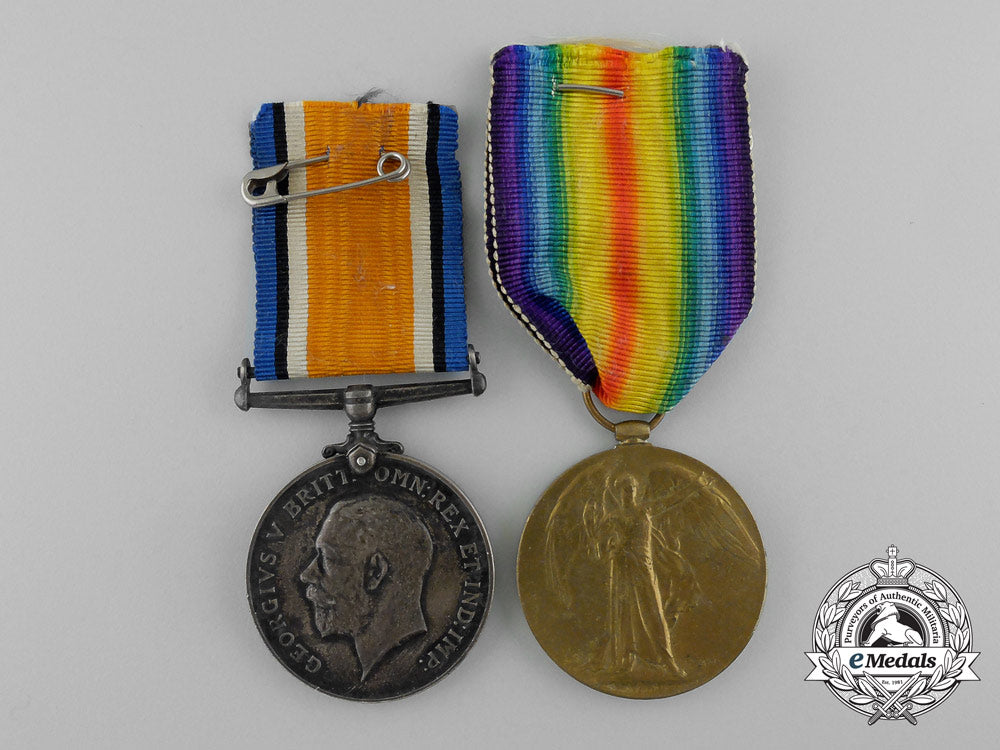
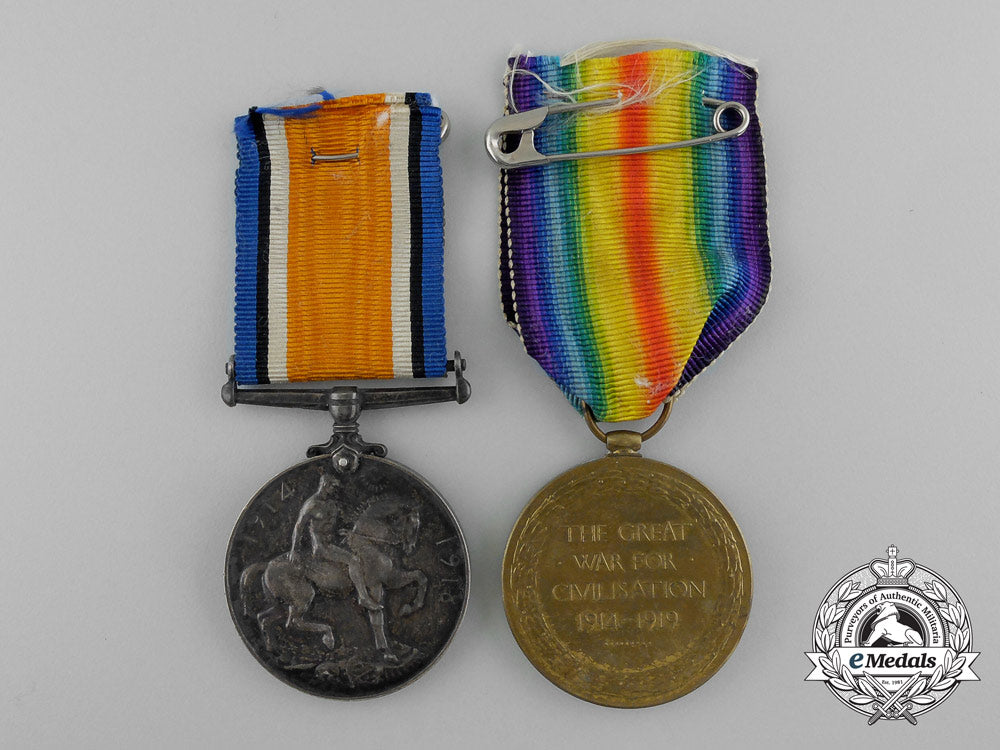
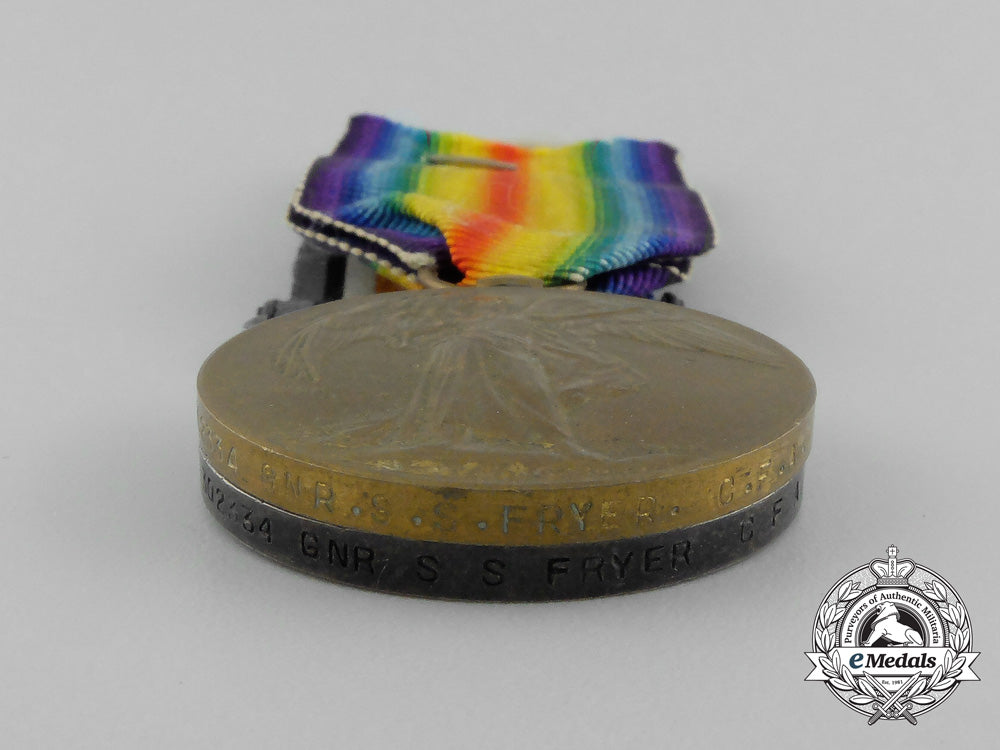
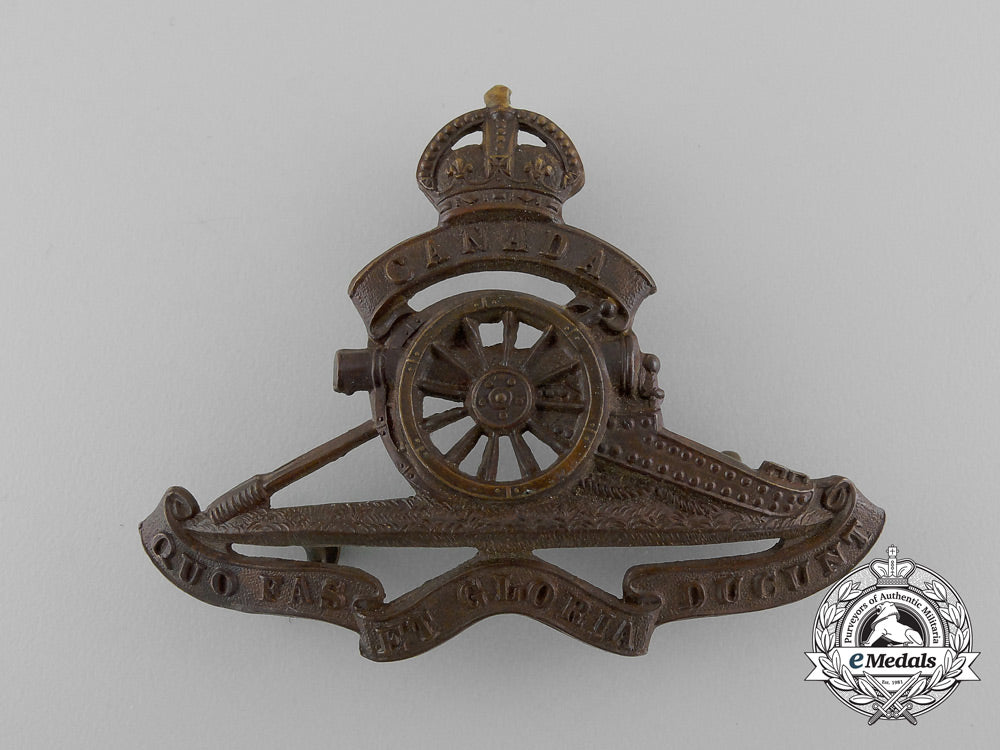
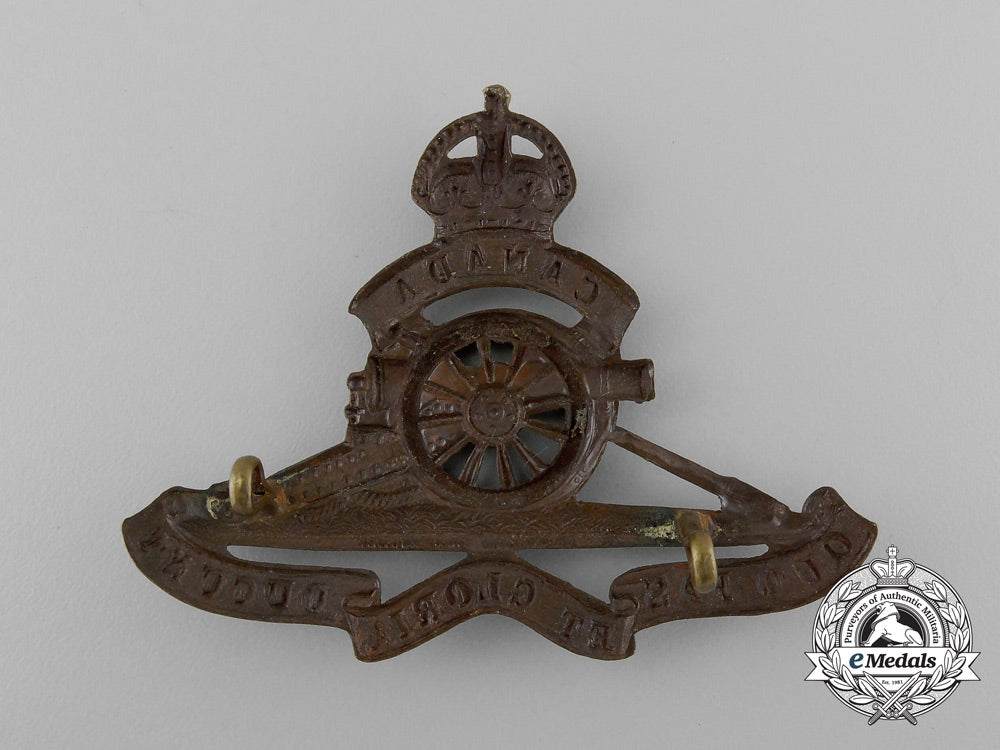
You May Also Like
Japan, Empire. A T90 Civil Defense Helmet, c.1943
W8287
Canada, CEF. A Large Oval Photo
C7175
International. A Lot of Five Medals & Badges
M0685-9
Italy, Kingdom. An Order of St. Maurice and St. Lazarus, c.1900
EU23629
Spain, Kingdom. A Royal and Military Order of St. Hermenegildo, Grand Cross Star, c.1880
EU23630
-
Japan, Empire. A T90 Civil Defense Helmet, c.1943
W8287
Add to CartRegular price $275 USDRegular price $0 USD Sale price $275 USDUnit price / per -
Canada, CEF. A Large Oval Photo
C7175
Add to CartRegular price $120 USDRegular price $0 USD Sale price $120 USDUnit price / per -
International. A Lot of Five Medals & Badges
M0685-9
Add to CartRegular price $200 USDRegular price $0 USD Sale price $200 USDUnit price / per -
Italy, Kingdom. An Order of St. Maurice and St. Lazarus, c.1900
EU23629
Add to CartRegular price $375 USDRegular price $0 USD Sale price $375 USDUnit price / per -
Spain, Kingdom. A Royal and Military Order of St. Hermenegildo, Grand Cross Star, c.1880
EU23630
Add to CartRegular price $685 USDRegular price $0 USD Sale price $685 USDUnit price / per
Do you have a similar item you are interested in selling?
Please complete the form and our client care representatives will contact you.
Sell Item